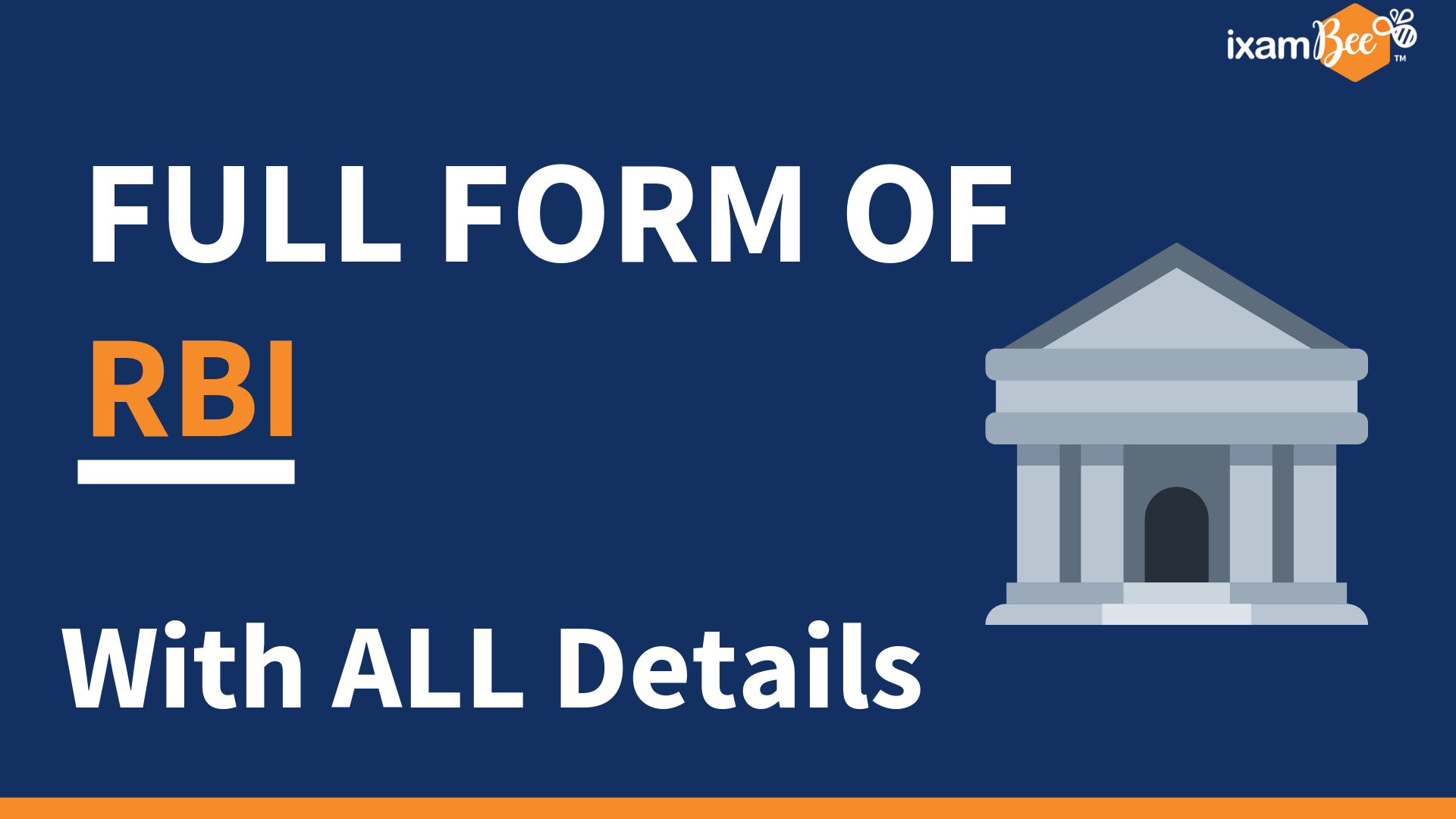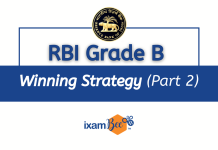The Reserve Bank of India stands as the central entity overseeing the nation’s entire financial and economic framework, earning its status as one of India’s paramount and prestigious institutions. It shoulders the responsibility for all monetary transactions and issues, aided by various subsidiaries and participating banks that contribute to the seamless functioning of the financial processes. To sustain its legacy of operational excellence, the RBI annually recruits dedicated professionals, ensuring the ongoing provision of exemplary service to the country. If you envision a career at the RBI, a comprehensive understanding of its history and functions is imperative—details are explored thoroughly in this article.

What is RBI?
The Reserve Bank of India (RBI) holds a pivotal role in India’s financial landscape. Established on April 1, 1935, initially as a private entity, it underwent nationalization in 1949, becoming wholly owned by the Government of India. Functioning as the country’s central banking institution, the RBI meticulously regulates the issuance and circulation of the Indian Rupee, maintaining monetary stability and economic growth. Over the years, the RBI has evolved into a multifaceted institution, overseeing monetary policy, financial supervision, and the development of India’s banking and financial infrastructure. Its enduring commitment to fostering economic resilience and financial integrity underscores its significance in India’s economic narrative.
Reserve Bank of India: History & Establishment
RBI, or Reserve Bank of India, is a member bank of the Asian Clearing Union. Its establishment in 1935 stemmed from the aftermath of the First World War, addressing economic challenges. The Hilton–Young Commission’s recommendations in 1926 laid the groundwork, and the RBI Act of 1934, endorsed by the Central Legislative Assembly, provided the framework for its inception. Rooted in a historical context, the RBI stands as a testament to India’s proactive approach to economic stability and resilience in the face of global uncertainties. It was enacted on 6th March 1934.
Given below is a brief history of the origin of the Reserve Bank of India.
Heads of the Reserve Bank of India
The governance of the Reserve Bank is entrusted to a central board of directors, a body appointed by the Government of India as mandated by the Reserve Bank of India Act. This board oversees and directs the affairs of the RBI, ensuring alignment with the statutory framework and national economic objectives.
At present, Mr. Shaktikanta Das is serving as the 25th Governor of the Reserve Bank of India (RBI). Previously, he held roles as a member of the Fifteenth Finance Commission and served as India’s Sherpa to the G20. Mr. Das, a retired officer of the 1980 batch of the Indian Administrative Service (IAS), hails from the Tamil Nadu cadre.
The RBI Central Board of Directors consists of 21 members. The hierarchy of the Board is as follows.
Official Directors
- Full-time: Governor and four Deputy Governors
Non-Official Directors
- Nominated by the Government: two Finance Ministry Representatives (usually the Economic Affairs Secretary and the Financial Services Secretary), ten government-nominated Directors to represent essential elements of India’s economy;
- Others: four Directors representing local boards headquartered in Mumbai, Kolkata, Chennai, and the capital New Delhi. Each of these local boards consists of five members who represent regional interests and the interests of cooperative and indigenous banks.
Also Read: RBI Governors List with Updated Names & Tenure
Centre of Operations & Branches of RBI
The Reserve Bank of India (RBI) anchors its operations in Mumbai, with a formidable presence nationwide. Complementing its headquarters, four zonal offices in Chennai, Kolkata, Delhi, and Mumbai serve as strategic hubs. Further reinforcing its reach, the RBI boasts 21 regional offices and 11 sub-offices dispersed throughout India. This extensive network facilitates the effective implementation of monetary policies, regulatory measures, and financial oversight, ensuring the RBI’s pervasive influence in fostering economic stability and growth across diverse regions of the country.
For the complete list of the Reserve Bank of India’s offices, take a look at the video attached below, where Susheel Sir discusses the details of the various RBI Offices.
Functions of the Reserve Bank of India
A central bank, irrespective of its country of operation, undertakes a multitude of responsibilities beyond the issuance of currency. Its functions extend far beyond the mere production of money, encompassing pivotal roles such as formulating and implementing monetary policy, regulating and supervising financial institutions, managing foreign exchange reserves, and ensuring overall economic stability. Acting as a financial backbone, a central bank plays a crucial role in fostering a robust and resilient economic environment, influencing interest rates, and mitigating financial risks on both national and international scales.
The preamble of the Reserve Bank of India describes its main functions as:
“..to regulate the issue of Bank Notes and keeping of reserves with a view to securing monetary stability in India and generally to operate the currency and credit system of the country to its advantage”.
Some of RBI’s Major Functions include-
Financial Regulation
- An integral function of the Reserve Bank of India’s role is the comprehensive supervision of the financial sector, encompassing commercial banks, diverse financial institutions, and non-banking finance companies.
- Through rigorous oversight, the RBI ensures the stability, integrity, and efficiency of these entities.
- This multifaceted supervision involves regulatory measures, risk assessment, and policy implementation, contributing to the overall health and resilience of the financial landscape and safeguarding the interests of depositors and stakeholders.
Regulator of the Banking System
- The Reserve Bank of India (RBI) bears the crucial role of overseeing the nation’s financial system.
- As the regulator and supervisor of the Indian banking system, it is dedicated to upholding financial stability and fostering public confidence.
- Utilizing tools such as on-site inspections, off-site surveillance, scrutiny, and periodic meetings, the RBI exercises supervision over aspects like the issuance of new bank licenses, establishment of capital requirements, and regulation of interest rates in specific sectors.
- Presently, the RBI is actively engaged in implementing regulatory norms to fortify the integrity and resilience of the financial framework.
Banker and Debt Manager to the Government
- RBI fulfills the Government’s need of a bank to carry out its financial transactions.
- As a banker to the GoI, RBI maintains its accounts, receives payments & makes payments out of these accounts.
- RBI also helps GoI to raise money from the public via issuing bonds and government approved securities.
- It has to maintain and operate the government’s deposit accounts. It collects receipts of funds and makes payments on behalf of the government.
- It represents the Government of India as the member of the IMF and the World Bank.
Foreign Exchange Manager
- A significant goal of the Reserve Bank of India (RBI) is to foster and streamline external trade and payments while overseeing the foreign exchange market.
- As India’s economy becomes more interconnected globally, with heightened trade and capital movements, the foreign exchange market has emerged as a pivotal component of the national financial landscape.
- The RBI assumes a crucial role in regulating and overseeing this dynamic sector, effectively managing the nation’s forex and gold reserves to uphold economic stability and facilitate international financial transactions.
Issuing Currency
- The Reserve Bank of India (RBI) holds the exclusive authority to issue currency, with its notes declared as unlimited legal tender nationwide.
- Beyond issuance, the RBI manages the withdrawal of unfit banknotes. At the same time, coins and one rupee notes are minted by the Government of India, with the RBI acting as a distribution agent.
- To combat counterfeiting, the RBI continually enhances security features. Currency printing occurs at four RBI facilities in Dewas, Nasik, Mysore, and Salboni.
- With the power to issue notes up to Rs. 10,000 and coins up to Rs. 1,000, the RBI safeguards economic structure, pursuing both price stability and economic development objectives.
Points to be Noted-
- On November 8, 2016, the RBI issued new notes of Rs 500 and Rs 2000. This gave birth to the much – talked about topic of “DEMONETISATION.”
- The old series of Rs 500 and Rs 1000 notes is now considered invalid and illegal.
- On May 19, the Reserve Bank of India (RBI) issued a directive discontinuing the ₹2,000 banknotes from circulation. The public was granted until September 30 to either exchange or deposit these notes as per the RBI’s instructions.
Caretaker of Cash Reserves of Commercial Banks
- Functioning as a central bank, the Reserve Bank of India (RBI) manages the banking accounts of scheduled commercial banks, where they can deposit funds.
- Commercial banks, in turn, generate credit, and the RBI assumes the responsibility of credit control through tools like CRR, repo rate, and open market operations.
- In its role as the bankers’ bank, the RBI facilitates check clearing among commercial banks and aids in inter-bank fund transfers.
- Additionally, the RBI serves as a lender of last resort, extending emergency advances to banks when needed, such as shortage of funds, etc., at a specific rate which is called the “Repo Rate”, ensuring financial stability in the banking sector.
Custodian of the Country’s Foreign Currency Reserves
- The Reserve Bank of India (RBI) holds the custodianship of the nation’s reserves of international currency.
- This pivotal role empowers the RBI to effectively address crises stemming from an unfavorable balance of payments position.
- By strategically managing and deploying these reserves, the RBI plays a crucial part in safeguarding the country’s economic stability during challenging periods, ensuring resilience against external economic shocks, and maintaining a robust position in the global financial landscape.
Developmental Role
- The central bank shoulders a diverse array of promotional functions to align with national objectives and industries.
- In grappling with inter-sectoral and localized inflation challenges, the RBI contends with issues stemming from the prominent role of the public sector. Addressing these concerns involves utilizing key tools such as Priority Sector Lending, focusing on areas like agriculture, micro and small enterprises (MSE), housing, and education.
- The RBI is dedicated to fortifying and endorsing small local banks, fostering financial inclusion by encouraging the establishment of branches in rural areas to encompass a broader segment of society within the banking network.
Formulation of Monetary Policies
- The Reserve Bank of India (RBI) takes charge of formulating, executing, and overseeing monetary policy—a pivotal component of macroeconomic regulation, complementing fiscal policy.
- The primary objective of the monetary policy is to ensure a harmonious blend of price stability and economic growth.
- Focusing on interest rates, bank credits, and money supply, this policy aims to maintain price stability while fostering economic expansion.
- Objectives include sustaining price stability, facilitating sufficient credit flow to productive sectors, expanding credit facilities, ensuring equitable credit distribution, and promoting fixed deposits.
- The RBI employs various tools like Open Market operations, Bank Rate, Cash Reserve Ratio (CRR), Statutory Liquidity Ratio (SLR), Repo rate, and Reverse Repo rate, alongside qualitative instruments to indirectly impact money supply.
Let’s also familiarize ourselves with key terms mentioned earlier—Bank Rate, Cash Reserve Ratio (CRR), Statutory Liquidity Ratio (SLR), Repo rate, and Reverse Repo rate.
| Bank Rate | Repo Rate | Reverse Repo Rate | Cash Reserve Ratio |
| 1. Bank Rate is the interest rate at which the RBI extends loans to commercial banks or financial institutions. Banks capitalize on the profit margin by borrowing at a lower rate and lending the acquired funds at a higher interest rate. 2. Any adjustment in the bank rate by the RBI directly impacts the interest rates set by banks for their clients, influencing the overall profitability. | 1. This marks the rate at which banks borrow funds from the RBI. 2. By adjusting the repo rate, the RBI can either make borrowing more expensive for banks, facilitating a tighter monetary policy, or cheaper, fostering an environment conducive to increased borrowing and economic activity. | 1. This denotes the interest rate at which the RBI borrows funds from commercial banks or other financial institutions. 2. Utilized as a tool to manage money supply, an increase in the reverse repo rate serves to reduce the available money in the economy. | 1. The Cash Reserve Ratio represents the mandated minimum percentage of deposits that banks must maintain with the RBI. 2. It serves as a mechanism to regulate the money supply; when the RBI seeks to boost the money supply, it decreases the Cash Reserve Ratio, and conversely, it increases the ratio to curtail the money supply in the economy. |
Reserve Bank of India Trivia
- The inspiration behind the Reserve Bank of India logo derives from the East India Company Double Mohur.
- Sir Osborne Smith held the distinguished title of being the inaugural Governor of the RBI.
- Mr. C.D. Deshmukh, the third governor of the RBI, was the first Indian to hold this prestigious position.
- The financial year for the RBI spans from July 1 to June 30.
- While the RBI exclusively handles the printing of currency notes, coin minting falls under the jurisdiction of the Government of India.
- K. J. Udeshi made history in 2003 as the first woman appointed as the deputy governor of the RBI.
- RBI once served as the central bank for two other nations, acting as the Central Bank of Pakistan until June 1948 and the Central Bank of Burma (Myanmar) until April 1947.
- Manmohan Singh holds the unique distinction of being the only Prime Minister who also served as the Governor of RBI.
Conclusion
In conclusion, the Reserve Bank of India stands as a cornerstone of the country’s economic infrastructure, wielding a multifaceted influence on monetary policy, financial regulation, and economic development. Established in 1935 and evolving with the dynamics of a globalized economy, the RBI operates as the central bank, ensuring the issuance and stability of the Indian Rupee. Its extensive network, encompassing regional offices and subsidiaries, attests to its commitment to nationwide financial inclusion. From shaping and implementing monetary policies to supervising banks and regulating interest rates, the RBI plays a pivotal role in steering India’s economic course with prudence and foresight, ensuring stability, growth, and resilience in the face of economic challenges.
Prepare with ixamBee
Embarking on the journey to become an RBI Grade B Officer commences with thorough preparation for the upcoming RBI Grade B exam 2024. ixamBee provides various resources for the RBI Grade B exam preparation, like the RBI Grade B Exclusive Online Course, RBI Grade B free mock tests, and RBI Grade B previous year question papers.
To help you prepare 50% faster for competitive exams, ixamBee provides a free Mock Test Series and all the Current Affairs in English and Current Affairs in Hindi in the BeePedia capsules for GA Preparation. You can also get the latest updates for Bank PO, Bank Clerk, SSC, RBI Grade B, NABARD, and Other Government Jobs.
Also Read
RBI Grade B 2024: How to Approach ESI Descriptive?
RBI Grade B Interview Questions & Experience






![List of Thermal Power Plants in India [Updated]](/blog/wp-content/uploads/2020/03/Blog-new-100x70.png)








